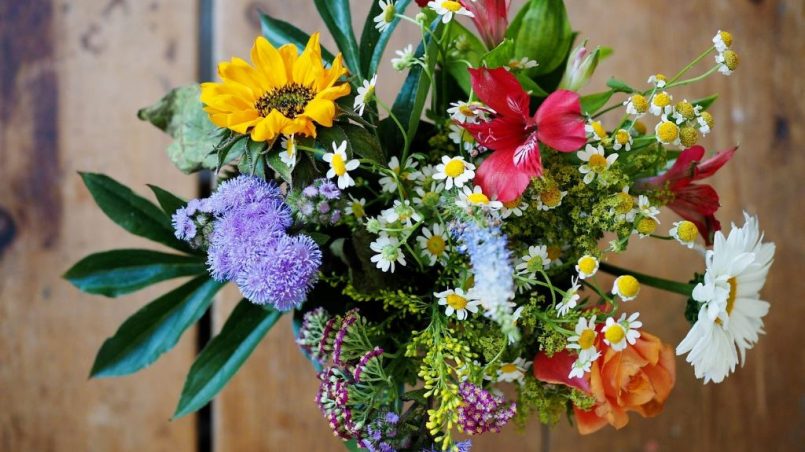Introduction to Floral Arrangements
Floral arrangements offer a timeless expression of beauty, emotion, and personality. They can elevate any occasion, whether adorning a dining table or serving as the centerpiece of a grand celebration.
Floral design combines creativity with technical expertise, allowing individuals to conceive arrangements that captivate and inspire. This exploration of floral arranging will address the nuances that contribute to creating breathtaking displays. Each arrangement is an opportunity to connect with nature and evoke emotions in a deeply personal way.
Understanding the Basics of Flower Selection
The initial steps in crafting a floral masterpiece lie in the thoughtful selection of individual blooms. Freshness is paramount; vibrant flowers ensure longevity and communicate vitality and care. Local and seasonal flowers are an excellent choice, offering a sustainable option that supports environmental and community goals. In vibrant urban areas like Boston, the demand for expertly crafted flower bouquets Boston MA showcases the enduring appeal of floral art.
When selecting flowers, consider the tone of the occasion and the message you seek to convey. For instance, roses are synonymous with romance and passion, while lilies often symbolize purity and renewal. By familiarizing yourself with the meanings of different flowers, you can create arrangements that are not only visually appealing but also deeply meaningful.
The Role of Color Theory in Floral Design
Color theory is indispensable in floral design, guiding the selection and combination of hues to create aesthetically pleasing arrangements. Utilizing the color wheel, designers can identify complementary colors that enhance each other’s brilliance, resulting in harmonious compositions that please the eye and soothe the soul.
Moreover, colors can evoke a wide range of emotions—a critical consideration when intending to set a particular mood. Explore this resource on color theory in floral design for additional insight into how these principles apply to floral arrangements. Even amateur florists can engineer creations that resonate with their intended ambiance by mastering these principles.
Balancing Shape and Texture
Shape and texture are crucial dimensions that add depth and intrigue to floral arrangements. Mixing soft, ruffled petals with sleek, angular foliage can create a striking contrast that draws the viewer’s gaze. Similarly, introducing unexpected items like succulents or ornamental grasses provides texture and visual interest, enhancing the overall composition.
While experimenting with shape and texture, strive for balance. Neither should dominate the arrangement, but meld into a cohesive whole that tells a story through its complexity. By blending various elements thoughtfully, you can craft memorable works of art that feel dynamic and harmonious.
Tips for Seasonal Flower Arranging
Capitalizing on the beauty of seasonal blooms offers a designer’s ever-changing palette. Each season has its unique flower roster, allowing for creative expression that reflects the time of year. Spring bursts with tulips and daffodils, their vibrant colors heralding new beginnings. Summer’s peonies and lavender provide a lush, rich backdrop, while autumn ushers in the earthy tones of chrysanthemums and dahlias.
Winter shouldn’t be overlooked either; holly and poinsettias bring festive vibrancy during the colder months. By incorporating seasonal selections, your arrangements will appear fresh and relevant and embody the very essence of the season.
Incorporating Fragrance for a Multi-Sensory Experience
Beyond aesthetics, fragrance is vital in enhancing the sensory experience of floral arrangements. Scented blooms such as gardenias or lilacs can elevate an arrangement, surrounding it with an aromatic atmosphere. However, balance is essential to avoid overwhelming the senses, allowing the fragrance to augment the visual components subtly.
Introducing scented herbs like rosemary or mint can enrich the experience, offering unexpected notes that complement floral scents. The thoughtful inclusion of fragrance can transform an arrangement into a multi-sensory masterpiece, delighting sight and smell.
Sustainable Practices in Floral Design
With growing awareness of environmental issues, sustainable floral design has emerged as a significant consideration. Adopting eco-friendly practices minimizes waste and aligns with modern values surrounding conservation. Techniques such as composting, recycling floral materials, and using biodegradable supplies contribute to a circular approach that reduces the impact on our planet.
Supporting local florists and growers is another sustainable strategy that optimizes your carbon footprint and fosters community ties. For more tips on incorporating ecological responsibility into floral artistry, explore this resource on sustainable floral design.
Conclusion
The intersection of art and science in floral arrangements offers limitless potential for creativity and personal expression. By mastering flower selection, color theory, and sustainable practices, anyone can create magnificent displays that captivate the eye and nourish the spirit. Encourage your imagination to lead the way, letting the inherent beauty of flowers inspire new and exciting creations.



